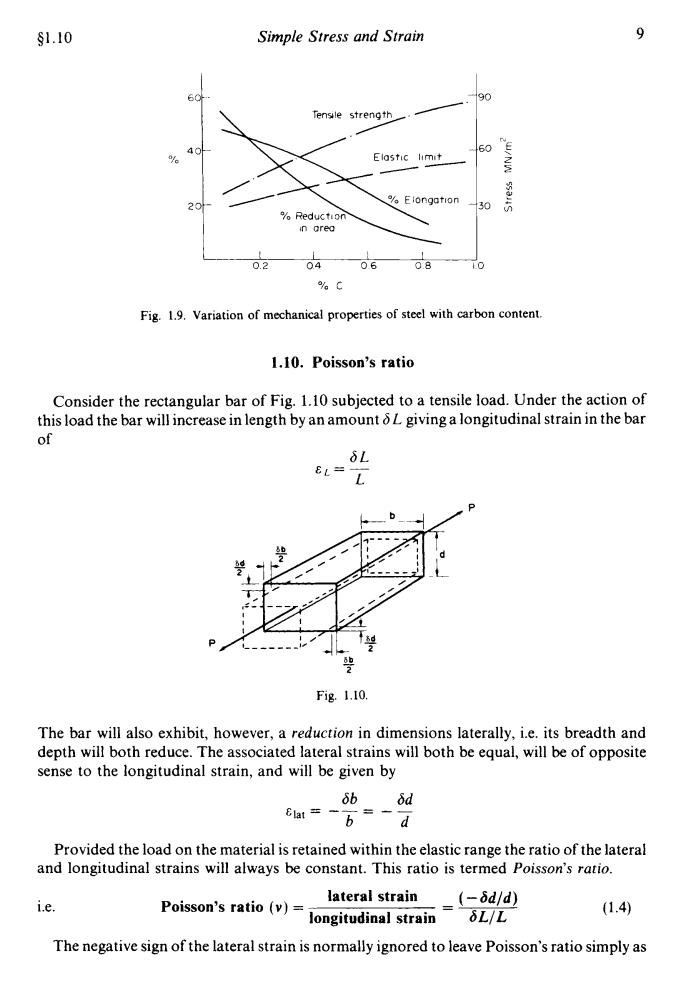正在加载图片...

§1.10 Simple Stress and Strain 9 190 Tensile strength 60 Elostic limit 20 Elongotion 30 Reduction in orea 0.2 04 060.8 C Fig.1.9.Variation of mechanical properties of steel with carbon content. 1.10.Poisson's ratio Consider the rectangular bar of Fig.1.10 subjected to a tensile load.Under the action of this load the bar will increase in length by an amount oL giving a longitudinal strain in the bar of L= L Fig.1.10. The bar will also exhibit,however,a reduction in dimensions laterally,i.e.its breadth and depth will both reduce.The associated lateral strains will both be equal,will be of opposite sense to the longitudinal strain,and will be given by 6bδd 8at=-6=-d Provided the load on the material is retained within the elastic range the ratio of the lateral and longitudinal strains will always be constant.This ratio is termed Poisson's ratio. i.e. Poisson's ratio(v)=】 lateral strain (-6d/d) longitudinal strainL/L (1.4) The negative sign of the lateral strain is normally ignored to leave Poisson's ratio simply as$1.10 Simple Stress and Strain 9 i90 I I I 02 04 06 08 10 Yo c Fig. 1.9. Variation of mechanical properties of steel with carbon content. 1.10. Poisson’s ratio Consider the rectangular bar of Fig. 1.10 subjected to a tensile load. Under the action of this load the bar will increase in length by an amount 6 L giving a longitudinal strain in the bar of 6L EL= - L Fig. 1.10. The bar will also exhibit, however, a reduction in dimensions laterally, i.e. its breadth and depth will both reduce. The associated lateral strains will both be equal, will be of opposite sense to the longitudinal strain, and will be given by 6b 6d b d Provided the load on the material is retained within the elastic range the ratio of the lateral &l,t = -- - -- and longitudinal strains will always be constant. This ratio is termed Poisson’s ratio. lateral strain (-6d/d) (1.4) 1.e. Poisson’s ratio (v) = - longitudinal strain 6LIL The negative sign of the lateral strain is normally ignored to leave Poisson’s ratio simply as